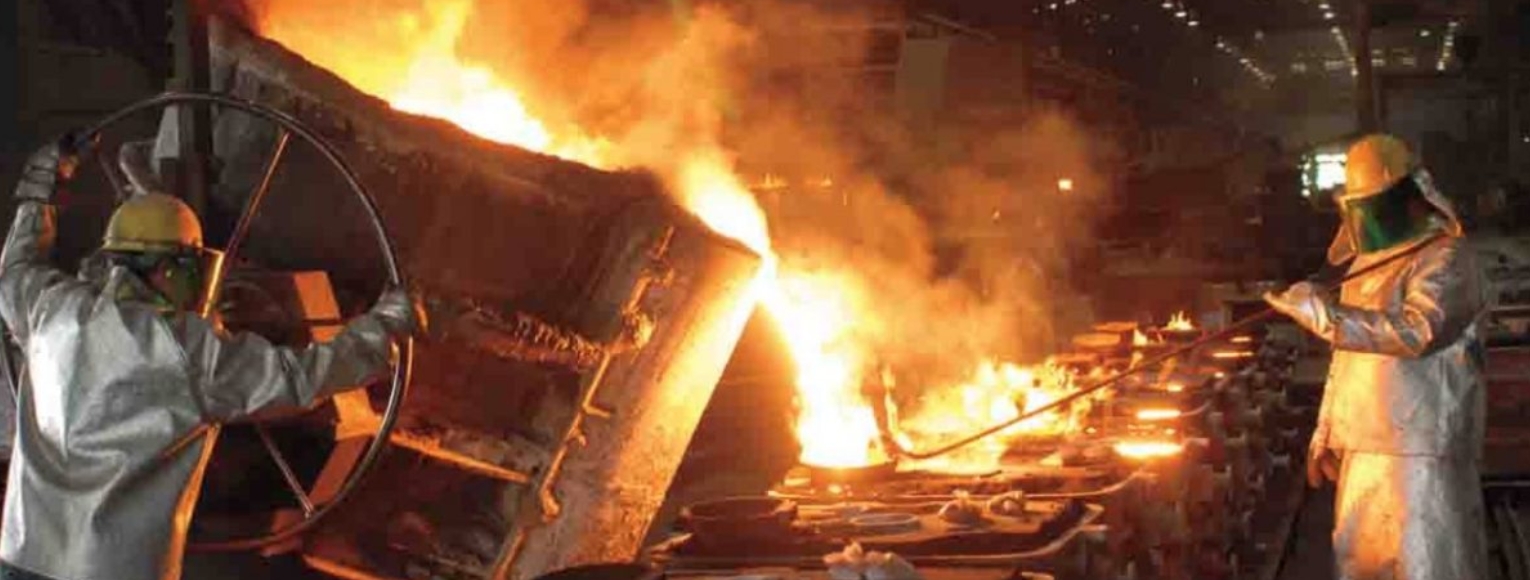
Steel casting process is a versatile manufacturing process used to produce parts by pouring molten steel into a mold where it solidifies. This process is essential for creating components in various shapes and sizes, often with complex geometries that are difficult to achieve through other manufacturing methods. Let’s delve into the basics:
Key Steps in the Steel Casting Process
- Pattern Making:
- A pattern, typically made of wood, metal, or plastic, is crafted as an exact replica of the final steel casting process. This pattern accounts for steel shrinkage during cooling.
- Mold Making:
- A mold is created using the pattern. The mold can be made of various materials, including sand or ceramics, suitable to withstand high temperatures.
- Melting and Pouring:
- Steel is melted in a furnace to the required temperature. The molten steel is then poured into the mold. Careful temperature control is crucial to produce a quality casting.
- Cooling and Solidification:
- After pouring, the steel is allowed to cool and solidify within the mold. The rate of cooling can affect the properties of the steel.
- Mold Removal:
- Once the steel has solidified, the mold is broken away from steel casting process. This step is often called shakeout.
- Cleaning and Finishing:
- Steel casting process cleaned of any mold material and excess metal. Additional processes such as grinding, sanding, or machining may be used to achieve the desired finish and dimensions.
Advantages of Steel Casting Process
- Complex Geometries:
- Enables the creation of parts with complex shapes and internal geometries that are challenging or impossible to achieve with other manufacturing processes.
- Size Flexibility:
- Suitable for both small and large components.
- Material Properties:
- Cast steel can be formulated with various alloys to achieve desired properties like strength, durability, and resistance to heat and corrosion.
- Tooling and Equipment:
- Utilizes relatively simple equipment compared to other manufacturing processes, allowing for more economical production of small batches.
Limitations
- Porosity and Inclusions: Steel casting process may lead to defects such as porosity, inclusions, or surface irregularities.
- Cost: While tooling costs are relatively low, the overall process can be expensive due to the costs of materials and energy, especially for low-volume productions.
- Post-Processing: Often requires additional machining and finishing to achieve precise tolerances and desired surface finishes.
Applications
- Automotive Industry: Engine parts, gearboxes, and other components.
- Heavy Machinery: Parts for mining, construction, and agricultural machinery.
- Railroads: Railway components including wheels, couplers, and frames.
- Marine Applications: Propellers, anchors, and hull parts for ships.
- General Engineering: A wide range of industrial machinery parts.
Conclusion
Steel casting process is fundamental process in modern manufacturing, offering the flexibility to produce a wide range of components with unique geometries and specialized material properties. Despite certain limitations, its advantages make it an indispensable technique in various industrial sectors.
